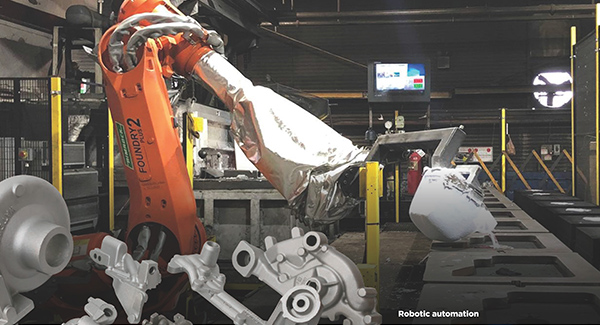Aluminum Casting Benefits for Construction, Agricultural & Mining Markets

Part Buyers Authority, Spring, 2019 issue.
Written by David Seilkop.
Reprinted by permission of Marketing Options, LLC.
The aluminum casting market has become a viable alternative solution in many industrial markets. Understanding how aluminum can replace traditional iron and steel in your product line is only part of the equation. The other part is understanding how they will be produced to enhance part longevity and reduce costs.
The aluminum casting market has enjoyed substantial growth in many automotive sectors and will continue to do so based on current trend analysis. Simply, aluminum alloys are proving a worthy alternative to conventional materials – iron and steel at a rapid rate. This growth is now over flowing into other sectors as well, namely construction, agricultural and mining industries on a global basis.
It is easy to understand the attractiveness of aluminum castings to these heavy-duty industries. Aluminum castings have always been desired because of their high strength to weight ratios compared to their iron and steel counterparts. Improving fuel economy, battery range, safety and overall driving performance has led to unprecedented growth. Manufacturers no longer feel tied to one alloy and one approach and are eager to adopt a multimaterial design that meets their needs.
The automotive market mandates to increase fuel efficiency while limiting carbon dioxide emissions has been a key driver for aluminum casting growth. Therefore, aluminum castings are becoming vital in a wider range of automotive parts including safety critical components, engine cylinders, engine blocks, gear boxes, engine and transmission bracketry and hydraulic applications. These parts, of course are also in other important transportation industries as well, most notably construction, agricultural and mining.
Limiting carbon dioxide emissions is not just an automotive mandate; it is becoming more important to all industries. Aluminum is proving to be an ideal replacement for heavier metals including iron and steel, specifically because being lighter weight reduces emission of carbon dioxide into the atmosphere. Additional aluminum casting benefits include the ability to mold to a nearer net shape and they can be produced in high or low volume production runs more cost effectively.
Manufacturers of high performance equipment for the oil, gas and construction industries benefit from better performing aluminum alloys and cost efficient parts that are as sustainable as other materials. Aluminum castings are becoming vital to all industries, but especially those that only thought steel or iron could produce the types of parts they required. In addition to a part that is lighter in weight, aluminum is considered to be the best choice for the environment when compared to iron and steel.
Aluminum castings can be produced to very tight tolerances in different methods ranging from aluminum sand casting, high/ low pressure die casting, permanent mold and investment casting. Understanding the right process for your part is critical, as many of these casting methods can reduce machining as well as other post processing operations, thereby making it also an economical method for the manufacture of heavy-duty construction, agricultural and mining equipment.

The growth of aluminum castings world-wide will naturally lead to additional research and development. This development will lead to new applications for aluminum castings. Anytime a market is seeing this much growth, you can expect to see it carry over into other markets segments as well.
It’s no surprise we are seeing manufacturing technologies designed to produce castings with a higher precision, at reduced costs. Additive Manufacturing (AM) trends have created enormous excitement. We expect to see enhanced automation growth throughout the entire foundry, ranging from PLCs, robotics, and software to handle the demand for this growth.
Automation is paving the pathway to safer and more efficient production to meet the growing capacity demands for aluminum castings.
The role that robots and smart technologies are playing to safely pour, handle and finish parts in today’s aluminum foundry cannot be understated, especially in our tight labor market. Synergizedsystems as described in Industrial 4.0 and Internet of Things (IoT) have arrived and provide the flexibility and reliability needed to handle the growth with precision and repeatability.
Industrial 4.0 is all about putting your data to work to improve the decision-making and reduce errors during the production process. From reducing energy at the melt deck to producing castings that need less machining, today’s aluminum foundry is a source of inspiration when it comes to operating under lean manufacturing principles to reduce waste and increase results.
